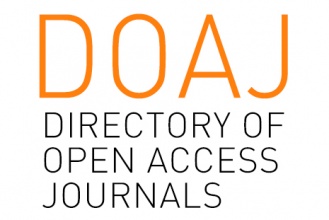Reduction of Penalties for Legal Entities in the Criminal Law of Iran and Afghanistan in Light of Judicial Determination of Punishment
Abstract
Legal entities, as one of the fundamental players in the realm of criminal justice, do not have a long history and have only attracted the attention of legislators in recent centuries. Given that these entities may, in the course of their activities, engage in a series of criminal behaviors, legislators consider these cases in criminalization and sentencing, taking into account the unique characteristics and other features of legal entities, and allow judges some discretion in sentencing. Thus, in certain cases, legal entities benefit from certain attributes or eligibility that allow for leniency, including mechanisms such as penalty reduction. Determining the circumstances under which these entities are eligible for reduced penalties, identifying the types of reductions, and assessing the resulting implications are topics worth exploring. This study addresses these questions through a descriptive-analytical method and library-based data, defining penalty reduction as a judgment for the minimum prescribed penalty, which can be categorized into degree reduction and specific reduction. When penalty reduction is applied to those committing criminal behavior, various effects can be expected, such as considering the offender's conditions, creating an environment for rehabilitation, and more.
Full Text:
PDFReferences
Afghan Penal Code / Ratified 2016.
Aghaeinia, Hossein. (2004). Mitigation of Punishment: Absolute Sovereignty or Restricted Authority in Criminal Sciences. In A Collection of Articles in Honor of Professor Dr. Mohammad Ashouri, 1st ed. Tehran: Samt Publishing.
Bahramand, Hamid. (2017). Classification of Ta'zir Punishments: From Innovation to Reevaluation. Majlis and Strategy Journal, 24th year, No. 92.
Delir, Hamid, & Mehrim Khezadi. (2018). Mitigation and Intensification of Punishment. 1st ed. Tehran: Mizan Publishing.
Islamic Penal Code / Ratified 1991.
Islamic Penal Code / Ratified 2013.
Mo'in, Mohammad. Mo'in Persian Dictionary, Vol. 1, n.d.
Noori, Qudsieh. (2021). A Comparative Study of Criminal Responsibility for Legal Entities in Afghan and Iranian Law. Master's Thesis, Criminal Law and Criminology, Ahl al-Bayt International University - Tehran.
Omid, Hassan. (2010). Omid Persian Dictionary. Tehran: Sekkeh Publishing, 1st ed.
Sheikh al-Islami, Abbas. (2016). Multiplicity of Crimes: Theories and Practices. 1st ed. Tehran: Mizan Publishing.
Tajik, Mohammad. (2019). Feasibility of Individualizing Punishment for Legal Entities. Master's Thesis, Criminal Law and Criminology, University of Tehran, Farabi Campus.
Tajoodi, Abdolali. (2023). Palliative Institutions in the Islamic Penal Code of 2013. 2nd ed. Tehran: Center for Publications and Publications of the Judiciary.
Touhidi Nafei, Jalal. (2015). Determining Punishments in the Iranian Judicial System and a Comparative Study with English Law.Doctoral Thesis,School of Shahid Motahari,Jurisprudence and Criminal Law.
DOI: http://dx.doi.org/10.18415/ijmmu.v12i2.6625
Refbacks
- There are currently no refbacks.
Copyright (c) 2025 International Journal of Multicultural and Multireligious Understanding

This work is licensed under a Creative Commons Attribution-NonCommercial-NoDerivatives 4.0 International License.
https://ijmmu.com
editor@ijmmu.com
facebook.com/ijmmu
Copyright © 2014-2018 IJMMU. All rights reserved.



































